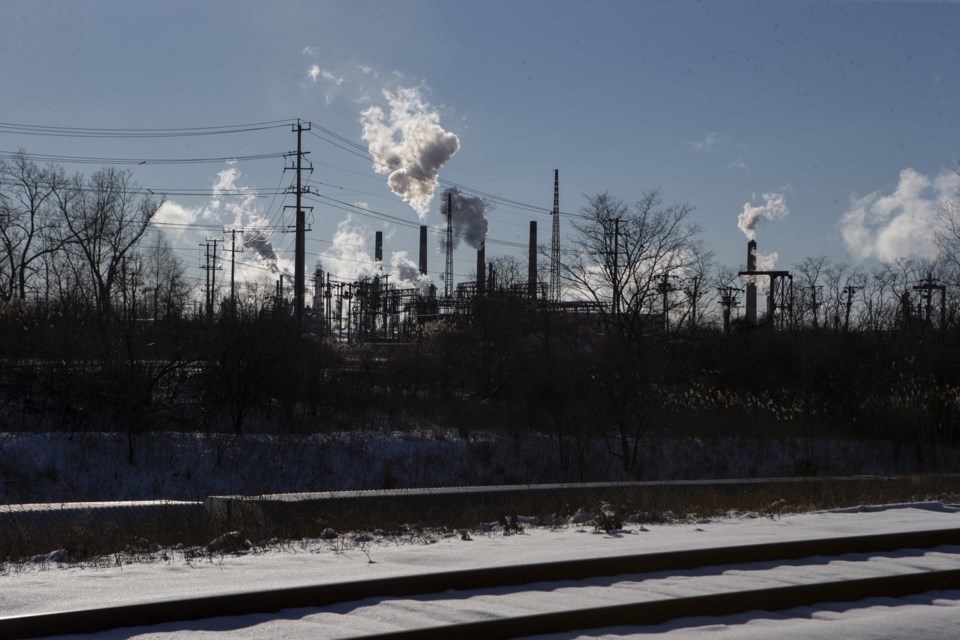TORONTO — Ontario has created new rules specifically for one Sarnia, Ont., plastics plant to try to ensure it stops emitting high levels of benzene that have affected a neighbouring First Nation for years.
The province has issued four orders to Ineos Styrolution since 2019, recently temporarily shut down the facility and added new conditions to its licence that it must meet before it restarts operations – but the government says benzene levels remain elevated.
The Ministry of the Environment, Conservation and Parks says it is very concerned about elevated levels of benzene recorded around the Aamjiwnaang First Nation. The community is across the road from Ineos and ministry analysis has confirmed that the company is the primary source of the benzene affecting the people of Aamjiwnaang First Nation.
"The (ministry) has been working with INEOS for some time to reduce its benzene emissions," the government wrote in an environmental registry posting about its new regulation.
"Despite four orders requiring the company to take steps to improve their operations, benzene levels remain elevated and a long-term strategy is needed."
Benzene can cause neurological symptoms such as dizziness and headaches following short-term exposures, and can cause cancers such as leukemia after long-term exposures.
It is a clear, mostly colourless liquid that is part of the makeup of crude oil. It's used to make styrene, a lightweight plastic used in everything from auto parts and food containers to toys.
The ministry says one-hour average concentrations in the air shouldn't exceed 90 micrograms per cubic metre, but this spring there have been several readings over that level at Aamjiwnaang monitors, including one instance of more than double that level. Aamjiwnaang declared a local state of emergency.
The new regulation includes requiring Ineos to meet limits on benzene concentrations, notify the ministry and Aamjiwnaang if the facility exceeds those limits at any time, identify and report on the causes of those instances, install enhanced monitoring systems and share real-time monitoring data on a publicly accessible website.
As well, the ministry is bringing Ineos under environmental penalties rules in such a way that it could levy penalties of up to $100,000 per day for very serious contraventions.
Ineos has not yet responded to the province's latest move, but did issue a statement over the weekend warning that it would need more time to comply with new rules the federal government recently implemented that were aimed at the company.
In mid-May, Environment Canada set out new air quality standards in the Sarnia area in a move targeted at Ineos Styrolution.
The company said emptying and cleaning all benzene from its tanks will require meticulous planning and could result in more emissions.
Ineos has also previously said it has always operated within emissions limits.
This report by The Canadian Press was first published June 4, 2024.
Allison Jones, The Canadian Press



